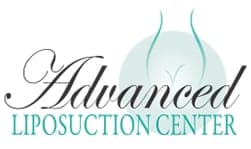
THE BASICS OF FAT TRANSFER
Here’s a primer on the basics of fat transfer! Right now there’s nothing quite like fat transfer. It’s a unique approach which harvests cells from a donor site (usually the abdomen, flanks, or thighs) and implants it into a target area. These harvested fat cells are purified using a centrifuge, resulting in a thick liquid which is immediately injected into the face to fill in hollow areas. The cells establish themselves and offer ongoing, long-term results, eliminating the need for continuing maintenance treatments. In almost all cases it’s a more economical choice than fillers, and the procedure typically pays for itself in about 2 years.
When the procedure is performed, the plastic surgeon will slightly overfill the treated area. This is because not all of the fat transferred to the face will survive permanently. Some of the cells will die within the first 6 months, which will make the volume levels dip somewhat. Once the six month mark has passed, however, the remaining cells should be permanently established.
Will I need multiple fat transfer sessions to achieve my desired results?
The number of fat transfer sessions needed to achieve your desired results can vary depending on several factors, including the amount of fat to be transferred, the areas being treated, and your individual goals. In some cases, a single fat transfer session may be sufficient to achieve the desired outcome. However, in other cases, multiple sessions may be recommended to achieve optimal results.
Is fat transfer permanent?
Fat transfer is considered a long-lasting but not necessarily permanent solution. The transferred fat cells can survive and become a permanent part of the body in the new location. However, the survival rate of transferred fat cells can vary, and some of the transferred fat may be reabsorbed by the body over time.
The longevity of the results can be influenced by factors such as the technique used, the quality of the harvested fat, and individual factors such as metabolism and lifestyle. Some patients may choose to undergo additional fat transfer procedures in the future to maintain or enhance the results.
Is there a limit to how much fat can be transferred?
Yes, there is a limit to how much fat can be safely transferred in a single session. The amount of fat that can be transferred depends on several factors, including the area being treated, the patient’s anatomy and skin elasticity, and the desired outcome.
Excessive fat transfer in a single session can increase the risk of complications such as lumpiness, asymmetry, and poor fat survival.
How soon can I return to normal activities after fat transfer?
The recovery time after fat transfer varies from person to person and depends on the extent of the procedure and individual healing factors. In general, most people can resume light activities within a few days to a week after the procedure, but strenuous activities should be avoided for several weeks.
All-natural solution
In short, fat transfer to the face is an all-natural solution for one of the most complicated sign of aging. For all practical purposes the facial enhancement is permanent, and the majority of patients are delighted with their final look!
Fortunately, there’s help. Dr. Mauricio Giraldo at The Advanced Liposuction Center in Cranberry, PA has performed hundreds of Facial Fat Transfer surgeries. This is an outpatient procedure that is much less involved than a surgical facelift, and can often be performed in a few hours. So whatever the cause of your fallen cheeks, your new look is now within your reach. Our initial consultations are always complementary, and you’ll learn what it will take to achieve the look you want by the minimally invasive method possible. Call today for your consultation—The Advanced Liposuction Center (724) 683-7581. Also check us out online at https://pricingliposuction.com.
